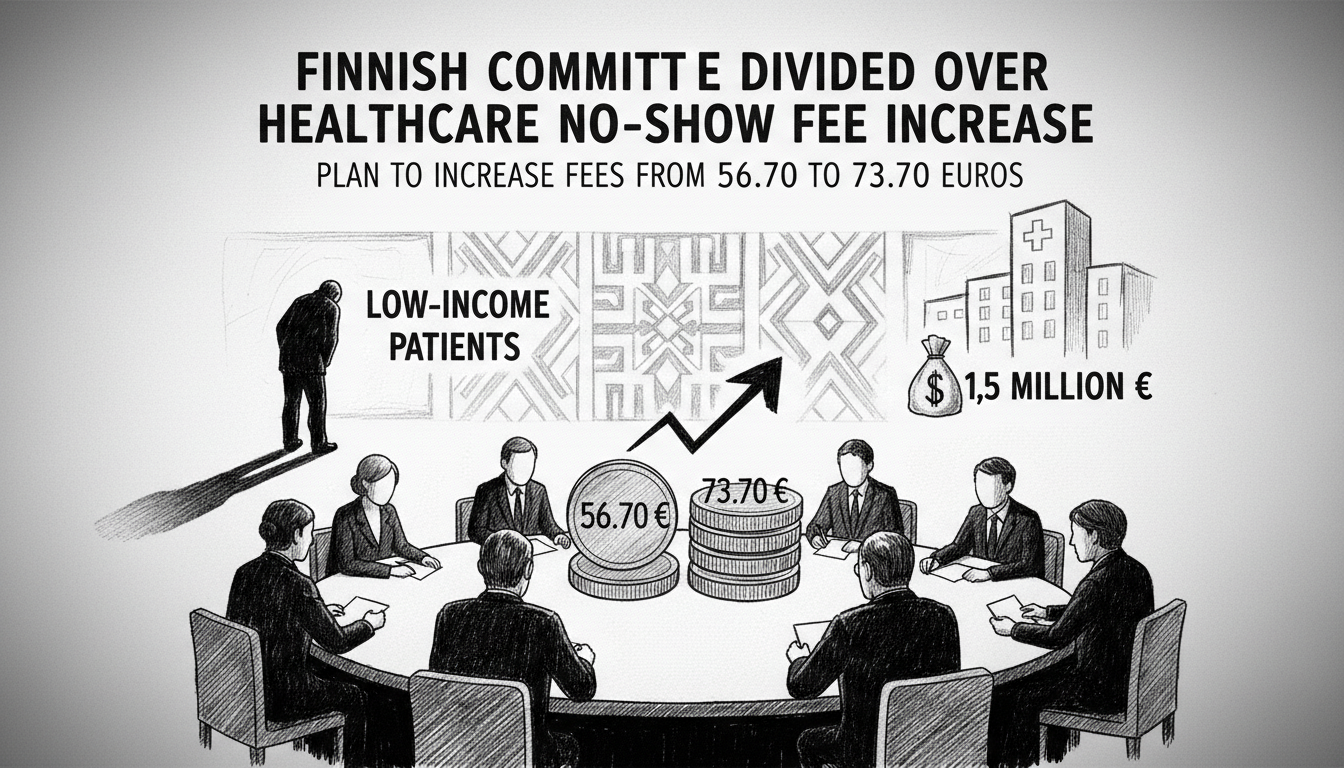A Finnish parliamentary committee has approved plans to increase no-show fees for healthcare appointments. The Social Affairs and Health Committee endorsed a proposal to raise the maximum charge for missed appointments from 56.70 euros to 73.70 euros. This represents a substantial 30 percent increase that will take effect at the turn of the year.
The fee hike aims to generate approximately 1.5 million euros in additional annual revenue for welfare regions. This amount will then be deducted from state funding allocated to these regions. The move comes as Finland's welfare regions face ongoing financial pressures following recent healthcare reforms.
Committee members emphasized that patients must have genuine opportunities to cancel appointments in advance. They stressed that welfare regions must provide clear cancellation instructions during booking processes. The regions must also inform patients about potential charges for missed appointments.
Important exceptions will remain in place. No fees can be charged when patients have valid reasons for missing appointments. These include sudden illness or delays in transport services for disabled individuals. The system aims to balance revenue generation with reasonable patient protections.
Opposition parties strongly objected to the measure. Representatives from the Social Democratic Party, Left Alliance, and Green Party submitted dissenting opinions. They argued the fee increase is neither reasonable nor effective in addressing appointment no-shows.
Critics highlight that vulnerable populations will bear the heaviest burden. The increase particularly affects chronically ill patients, disabled individuals, elderly citizens, and people struggling with life management. Many low-income households will feel the impact sharply, especially following recent social benefit reductions.
This debate reflects broader tensions in Finland's healthcare financing. The country continues balancing budgetary constraints with maintaining accessible public services. The no-show fee discussion connects to larger questions about cost-sharing in Nordic welfare systems.
Healthcare no-show rates remain a challenge across Nordic countries. Finland's approach differs from neighboring Sweden and Norway, which maintain different fee structures. The Finnish model emphasizes individual responsibility while attempting to protect the most vulnerable.
The fee increase will likely spark continued political debate. Opposition parties may raise the issue in upcoming parliamentary sessions. Patient advocacy groups have also expressed concerns about the timing and scale of the increase.
Finnish healthcare reforms continue evolving as the system adapts to demographic and economic pressures. This fee adjustment represents one small part of ongoing changes to the Nordic welfare model. The final implementation will show how effectively it balances revenue needs with patient protection.
